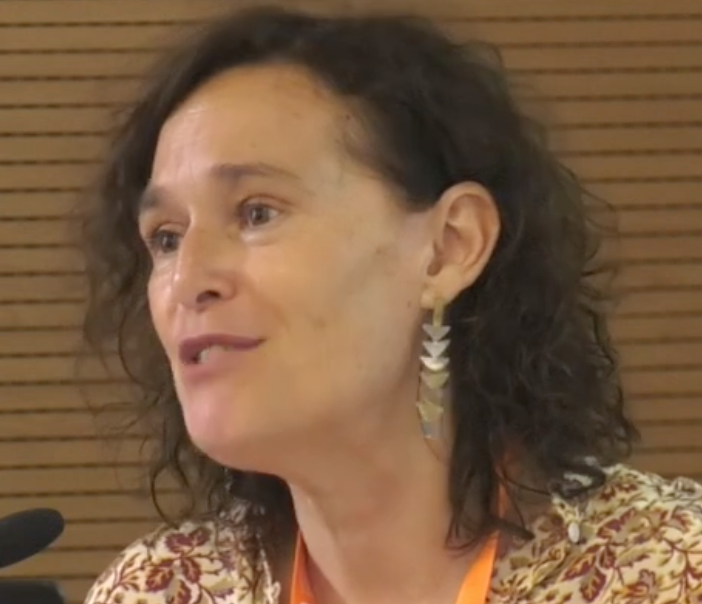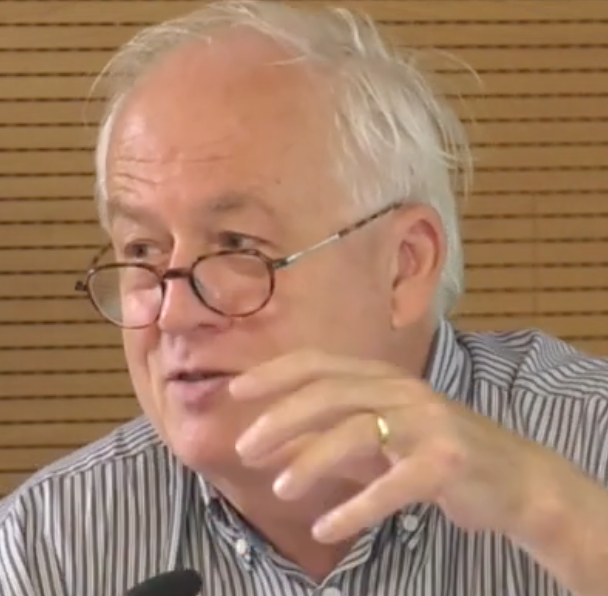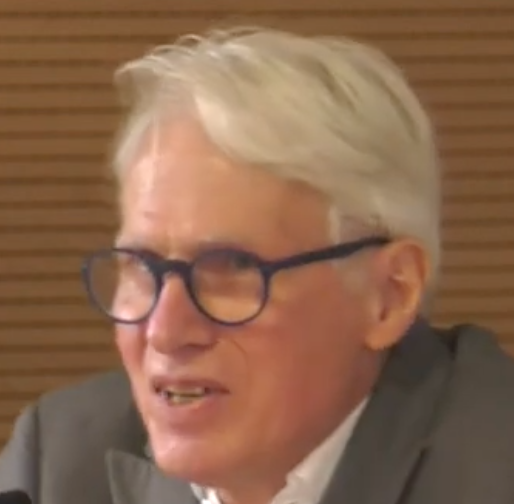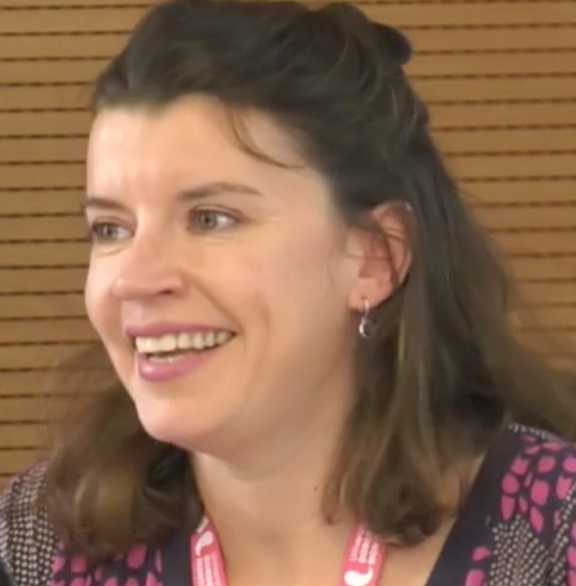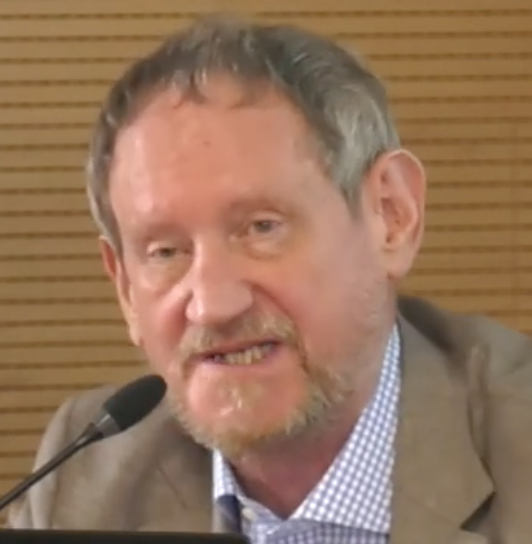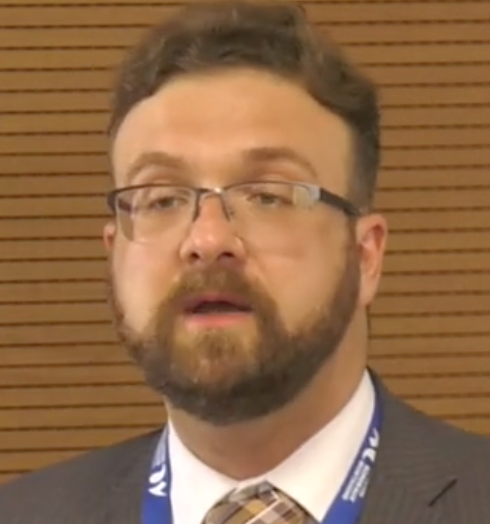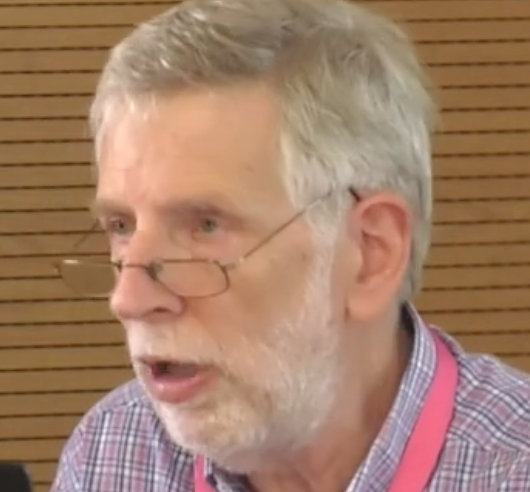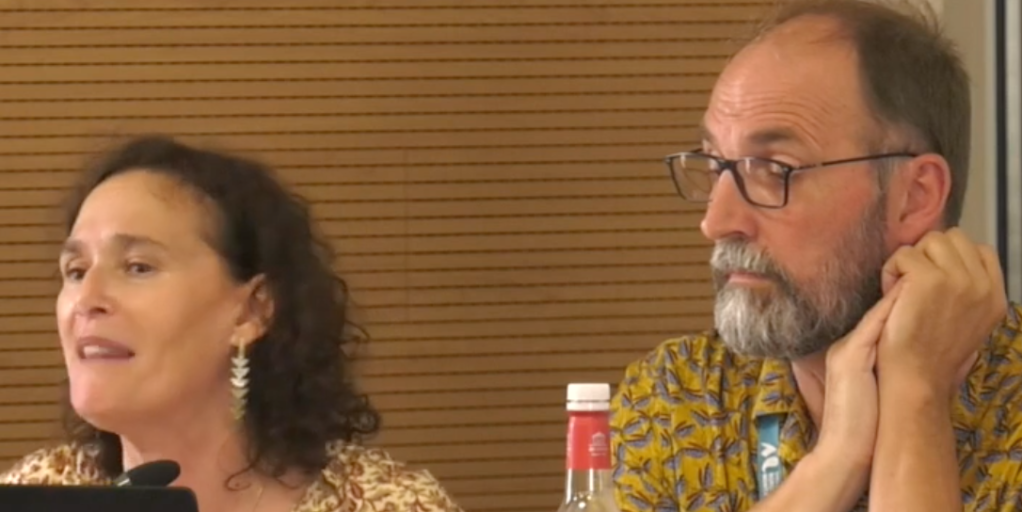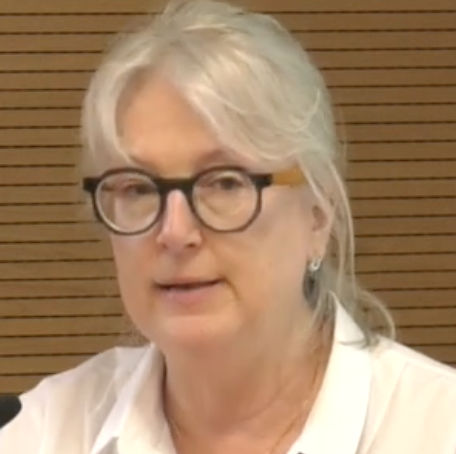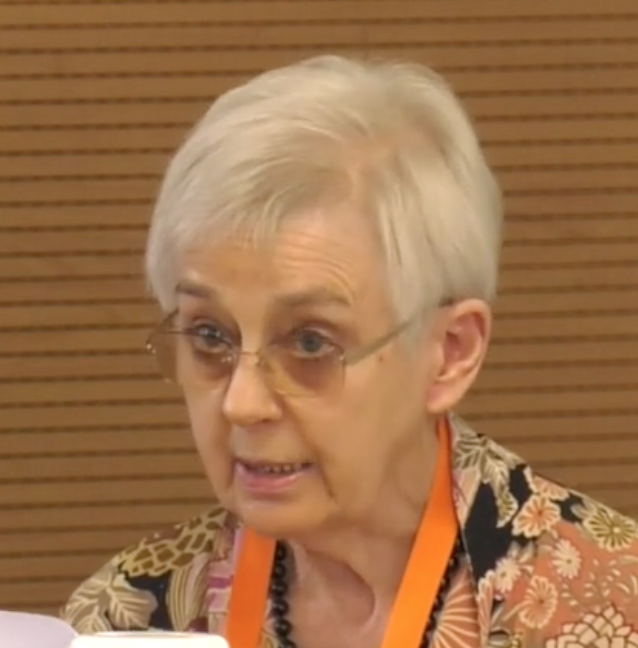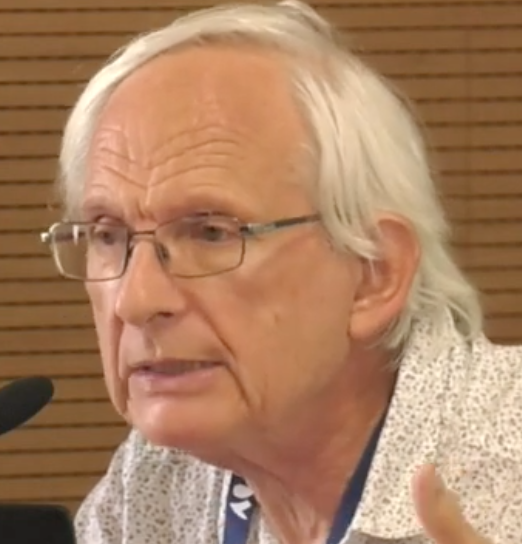Archive for the ‘Travels with a Donkey’ Category
Stevenson’s Montaigne, part 2
.
Columbia University
Columbia University, situated on the upper west side of Manhattan, north of Central Park, has a campus of lawns and wide pedestrian avenues that has the feel of a garden suburb, while the calm spaces around the monumental buildings are reminiscent of Piero della Francesca’s ‘Città Ideale’. One of these buildings (below) is the Butler Library, beaux-arts neoclassical in style, where I was headed in order to look at Stevenson’s copy of Montaigne. Up on the top floor, in Rare Books and Manuscripts, I went through registration pleasantly enough thanks to a young lady with public relations skills, received a locker key on a large, slender iron ring (like that of an old-fashioned gaoler), stowed my things, entered the corridor-like reading room with a couple of dozen tables, handed in my request and was “all set”, waiting for the books to arrive.
Up on the top floor, in Rare Books and Manuscripts, I went through registration pleasantly enough thanks to a young lady with public relations skills, received a locker key on a large, slender iron ring (like that of an old-fashioned gaoler), stowed my things, entered the corridor-like reading room with a couple of dozen tables, handed in my request and was “all set”, waiting for the books to arrive.
Stevenson’s Montaigne: First impressions
The edition consists of four volumes in good condition (stoutly bound, well-printed, on good paper) that have been much marked by Stevenson: his typical vertical lines in the margin, occasionally double (very occasionally triple), some underlining, and a few comments written in the margin or (for translations) between the lines. I immediately realized there were too many markings to log them all, so decided to note only double lines, underlinings and comments.
I started on volume 1 (containing Montaigne’s Book I) and immediately finished it: there are just two markings: a double line marking of a passage of ‘To the Reader’ and one single marginal mark on the first page of the first essay.
Volume 2, containing about half of Montaigne’s Book II (including the very long ‘Apology for Raimond Sebond’), shows many signs of having been read: there are markings on 12 of the 18 essays, possibly made in 1891 when he said he was reading Book II (L7, 179).
Strangely, the second half of Montaigne’s Book II in the following volume has markings for only 2 of the 19 chapters. But this volume 3 contains the beginning of Montaigne’s Book III, every essay of which is marked, both here and in its continuation in volume 4 (which has the last four essays and then other matter).
From the evidence here, it looks as if Stevenson skipped his volume 1, carefully read volume 2, and then concentrated on Montaigne’s Book III. This squares with what he says about often reading Montaigne without any attempt to read him from cover to cover: in ‘A Gossip on a Novel by Dumas’ (1887), he confesses
I have never read the whole of Montaigne, but I do not like to be long without reading some of him, and my delight in what I do read never lessens.
He remains one of six ‘continual literary intimates’, his Essays among ‘the books that we re-read the oftenest’:
One or two of Scott’s novels, Shakespeare, Molière, Montaigne, The Egoist, and the Vicomte de Bragelonne, form the inner circle of my intimates.
His ‘Ideal House’ (1883) has a ‘little room for winter evenings’ containing ‘three shelves full of eternal books that never weary starting’; the list that follows is longer, but starts ‘Shakespeare, Moliere, Montaigne…’.
Selective reading of Montaigne
Unmarked essays were not necessarily unread by Stevenson: he may have read them in the Cotton translation (which—I kick myself—was there in the Columbia Rare Books—overlooked by me); he could also have read them in another unrecorded edition, or read them without marking them. This said, marked essays certainly were read by him and found of interest.
Book I
The lack of markings in Book I is not totally surprising: Montaigne is here still groping for his method; the essays contain many classical exempla with an emphasis on stoicism (this evolution of Montaigne’s ideas—from the stoicism of the early essays to a position in the later essays that it is ‘in living happily, not […] dying happily that is the source of human contentment’—is one of the threads of Saul Frampton’s recent study When I am Playing with My Cat…).
It is a little surprising, however, to find no markings at all, given the affinity pointed out by Cinzia Giglioni (in European Stevenson, ed. Ambrosini and Dury, 2009) between Stevenson’s own ideas and interests and essays in Montaigne’s Book I with titles like: ‘Of Idleness’, ‘That to Study Philosophy is to Learn to Die’, ‘Of the Force of the Imagination’, ‘Of Pedantry’, ‘Of the Education of Children’, ‘Of Friendship’, ‘Of Cannibals’ (containing the epigram ‘Chacun appelle barbarie ce qui n’est pas de son usage’, which must surely have inspired Stevenson), and others.
The Stoic acceptance of death at the end of ‘Ordered South’ (1874) does indeed seem very close to one of these essays:
| Montaigne, from ‘To Study Philosophy is to Learn to Die’ (I.19): nature, leading us by the hand, an easy and, as it were, an insensible pace, step by step conducts us to that miserable state [death], and by that means makes it familiar to us, so that we are insensible of the stroke |
Stevenson, from ‘Ordered South’ (1874): in this dulness of the senses there is a gentle preparation for the final insensibility of death. And to him the idea of mortality comes in a shape less violent and harsh than is its wont, less as an abrupt catastrophe than as a thing of infinitesimal gradation, and the last step on a long decline of way |
.
Perhaps if I had looked Stevenson’s copy of Cotton I might have found that passage marked… [But see Neil Brown’s comment to this post.]
The same essay by Montaigne contains a call to live life without regard to death, a theme of ‘Æs Triplex’ (1878). Here the possible influence is less direct. Montaigne’s humble image of planting cabbages is perhaps transformed to the more noble writing of a folio, and it may have inspired the striking reference to everyday objects elsewhere in the essay: umbrellas, salad, cheese and ginger-beer bottles.
| Montaigne, from ‘To Study Philosophy is to Learn to Die’ (I.19): I would always have a man to be doing, and, as much as in him lies, to extend and spin out the offices of life; and then let death take me planting my cabbages, indifferent to him, and still less of my garden’s not being finished |
Stevenson, from ‘Æs Triplex’: It is better to live and be done with it, than to die daily in the sick-room. By all means begin your folio, even if the doctor does not give you a year |
That he had certainly read and knew Book I is shown by the quotation here in ‘John Knox’ (1875) to ‘the “two or three children” whom Montaigne mentions having lost at nurse’ , which is a reference to Montaigne’s Book I essay (with a long title) ‘That the relish for good and evil depends in great measure upon the opinion we have of them’.
.
Book II
In Samoa Stevenson reports that he is reading the second book of Montaigne and ‘This morning I have read a splendid piece of Montaigne’ (L7, 179; Oct 1891). We know that this was a book already familiar to him:
- ‘The English Admirals’ (written late 1877) incorporates a long quotation from Montaigne’s ‘Of Glory’ (Book II.16) in Cotton’s translation.
- In a letter of 1885 he alludes to a passage in ‘An Apology for Raimond Sebond’ (Book II.12): ‘as Montaigne says it [literature] is a pot with two handles, and I own I am wedded to the technical handle’ (L5, 91-2), a passage marked by by two vertical lines in vol 2 of this edition.
Book III
The markings on every one of the essays in Montaigne’s Book III after sparse markings in the second half of Book II shows that he read this Book through from start to finish. It is probable that this was what wanted to read (divided as it is between volumes 3 and 4 in his edition) when he wrote to his parents from Bournemouth in December 1884 to ‘bring […] my Montaigne, or, at least, the two last volumes’ (L5, 45). To be more exact, this was the section he wanted to re-read:
- In the letter of October 1873 in which he tells Fanny Sitwell he has been reading Montaigne as he dined alone, he quotes in French from ‘De la Physiognomie’ (Book III.12) (L1, 339).
- In ‘François Villon, Student, Poet and Housebreaker’ (written April-May 1877) ) he quotes from ‘De ménager sa volonté’ (Book III.10), using Cotton’s translation: ‘Shall we not dare to say of a thief,’ asks Montaigne, ‘that he has a handsome leg?’
- In ‘Crabbed Age and Youth’ (written just afterwards, July–August 1877) he writes: ‘While Calvin is putting everybody exactly right in his Institutes, and hot-headed Knox is thundering in the pulpit, Montaigne is already looking at the other side in his library in Perigord, and predicting that they will find as much to quarrel about in the Bible as they had found already in the Church’. This seems to be an allusion to a passage in ‘De l’expérience’ (Book III.13): ‘they but fool themselves, who think to lessen and stop our disputes by recalling us to the express words of the Bible: forasmuch as our mind does not find the field less spacious wherein to controvert the sense of another than to deliver his own; and as if there were less animosity and tartness in commentary than in invention’ (Cotton’s translation). Against this passage in this French edition, Stevenson has written ‘Calvin?’
- He quotes from ‘De l’expérience’ again in ‘A Night Among the Pines’ in Travels with a Donkey (written December 1878–January 1879), using Cotton’s translation again: ‘We are disturbed in our slumber only, like the luxurious Montaigne, ‘that we may the better and more sensibly relish it.’ We have a moment to look upon the stars.’
This concentration is unsurprising: Book III contains Montaigne’s profoundest insights, in its affirmation of the value of experience, the unity of man and animals and nature, the need for toleration and sympathy, the relative nature of cultural norms. So, in his reading of Book III, Stevenson was concentrating on the most original and revolutionary aspects of Montaigne’s philosophy.
Part 3 of the posting
But this is getting over-long. A concise summary of markings will be the subject of a (I hope shorter) third posting.
